FACELIFT (Meloplasty)
Facelift surgery (meloplasty or rhytidectomy) is a world wide plastic surgery procedure that removes wrinkles and lifts the facial components. A Facelift may make you appear a different age but many of our patients at Artiste Plastic Surgery present for many different reasons.
A Facelift is a Plastic Surgery procedure that lifts the facial skin, removes excess wrinkles and repositions the deep layers of the face to a higher position, through a carefully planned incision around the ear and in the hairline. A Neck lift is often included with a facelift to address the aesthetic appearance of the neck. The result is a lifted Face and Neck. Risks are present and these will be discussed during your consultation.
The face is unique and conveys the way we look and express ourselves as individuals. As we age, our faces undergo changes that can result in wrinkles, volume loss, and ptosis/falling facial appearance. A facelift can treat these anatomical changes. Dr Jack Zoumaras’ technique of High SMAS Face and Neck lift or Deep Plane Facelift aims to address the anatomically changes associated with descent of the facial retaining ligaments. Both of these technqiues have been presented on the international stage at many conferences.
Dr Jack Zoumaras dedicates a day’s operating on the face with a facelift and neck lift (that is deep to the muscle and deep plane). This attention to detail and care demonstrates the passion and commitment to you as our patient.
"*" indicates required fields
Why Have a Facelift
Learn about why people have facelift procedures with Dr Jack Zoumaras
*Level V Evidence: How you will feel after plastic surgery varies between individuals depending on psychological and physical factors, our internal research is based on how patients in our practice feel after surgery. This research is pending publication-details to follow.
What can be achieved?
Lift and Tone Skin
As we age, the collagen in our skin begins to break down, causing our facial tissues to become weak. Eventually, gravity pulls on the tissues and causes them to descend. Excess, facial skin usually occurs below the cheeks and along the jowls. A facelift will lift and tighten your skin, improving tone.
Smooth and Reduce Rhytids or Wrinkles
Wrinkles develop in areas of the face that experience the most movement. Typically, this is around the eyes and mouth. Trimming away excess skin and tightening the remaining tissue helps reduce the appearance of wrinkles, targeting both the eyes and mouth. Facelift techniques aim to reduce the vertical length of the eyelid cheek junction
Volumisation and Jowl Effacement (Reduction)
As fat and skin become displaced, jowls can develop and your cheeks can appear sunken. Fat is repositioned in the cheeks and along the jawline to improve the structure. Replacing fat along the cheeks can be a solution for age associated volume loss. Targeting jowls helps the neck and jawline.
Adult Content: Patients have given permission. The following patients of Artiste Plastic Surgery are representative only and do not guarantee that you will have the same result.
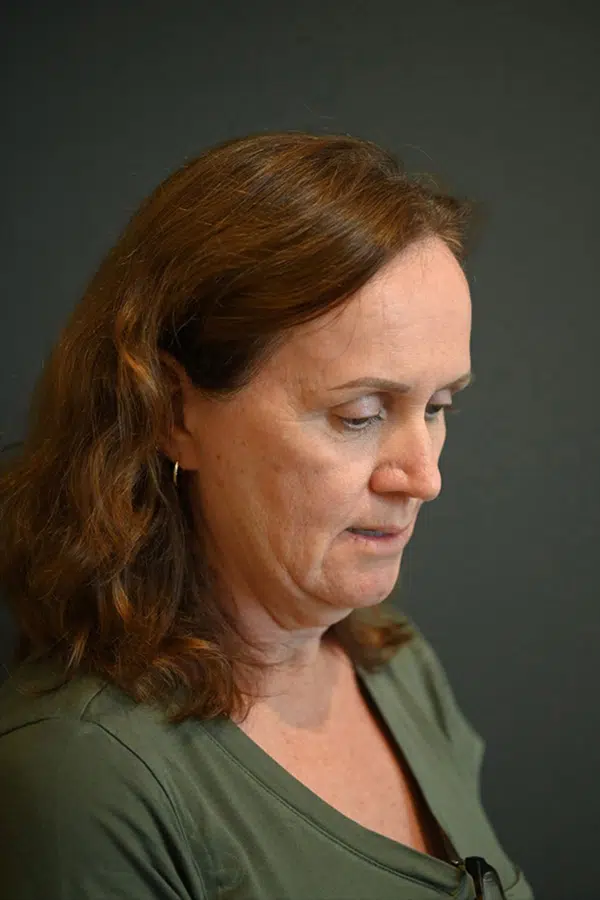

57 Year Old Before and After Deep Plane Facelift and Necklift
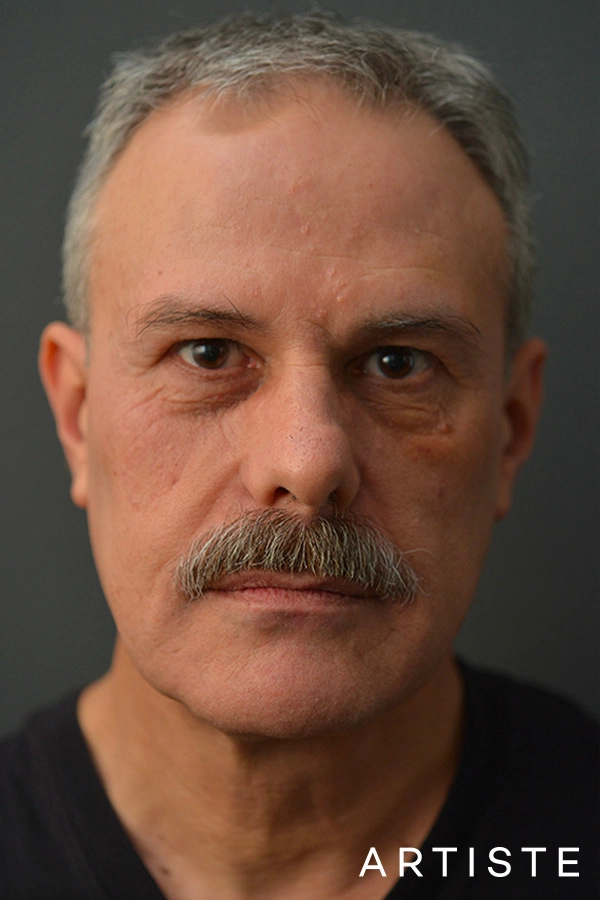
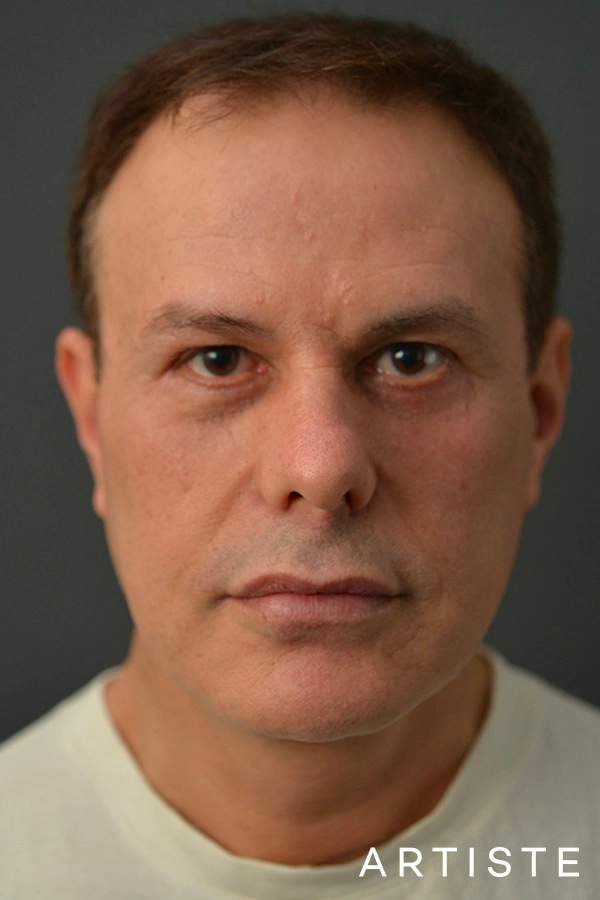
53 Year Old Before and After Facelift
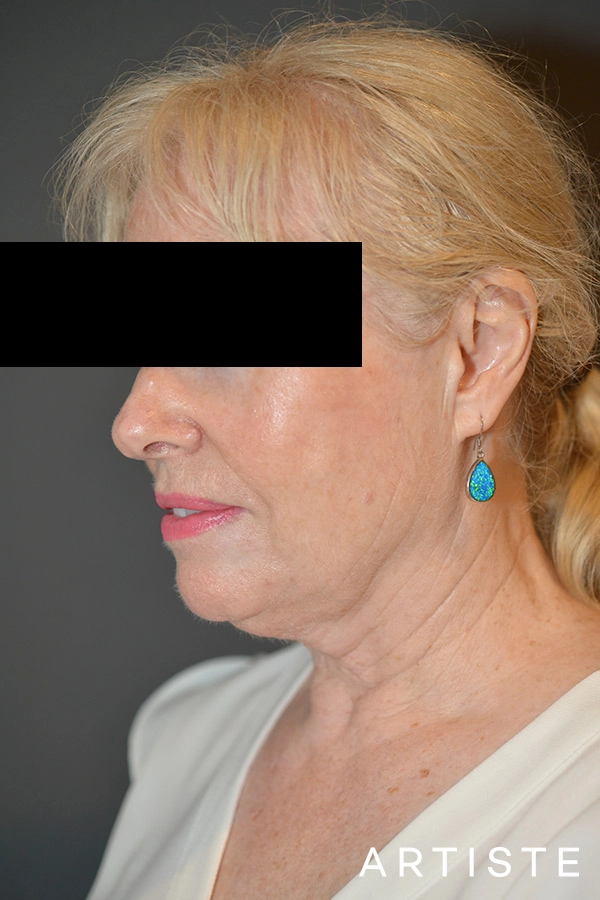
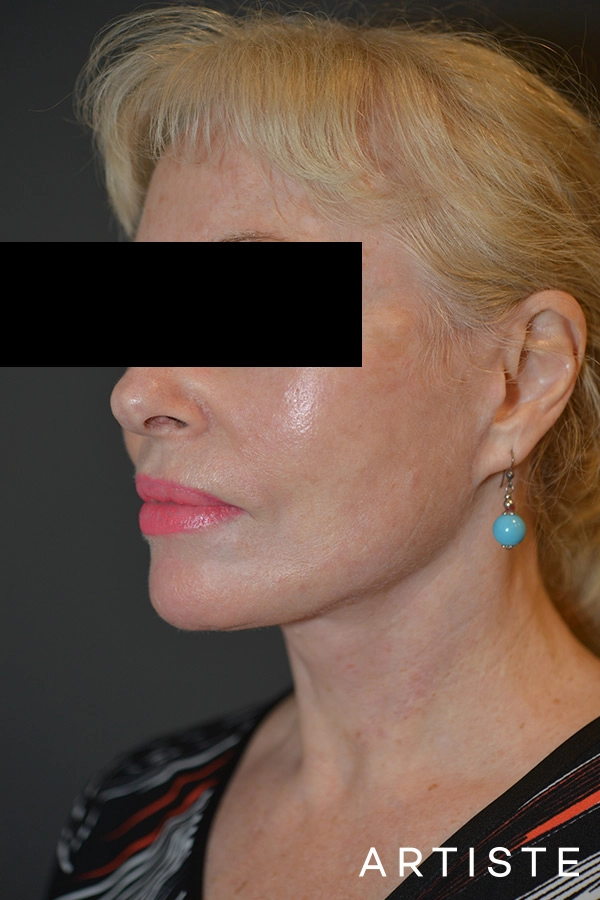
64 Year Old Before and After High SMAS Facelift and Necklift
PROCEdURE SNAPSHOT
3-6 hr Procedure
1 night in hospital
2 weeks unsociable
Qualified facelift plastic surgeon:
- World-trained Dr Jack Zoumaras
- Qualified Anaesthetist, Accredited hospital
Results: Firmer skin, lifted jowls, tight neck.
Investment in yourself
*Facelift surgery risks include bleeding, nerve weakness, scarring and more
You will feel:
*Level V Evidence: How you will feel after plastic surgery varies between individuals depending on psychological and physical factors, our internal research is based on how patients in our practice feel after surgery. This research is pending publication-details to follow.
You will not look fake
Facelift Options
A Facelift involves an incision in front of the ear, behind the tragus and along the temporal hairline. The incision may extend behind the ear, depending on the type of facelift, and under the chin when combined with a Neck Lift. This allows access to the underlying muscle, ligaments and skin.
Having your Facelift Surgery in Sydney by Dr Jack Zoumaras is an exciting, daunting and emotional journey. Firstly, you can be assured that Dr Jack Zoumaras is a Specialist Plastic Surgeon, and a peer reviewed facelift surgeon. He has trained internationally, in New York and Paris, by the leading Facelift surgeons in the world. Having an experienced and technical understanding of the anatomy of the ageing process, takes years of training and experience. This skill set, experience and constant learning is brought to every patient encounter.
The High SMAS Face and Neck Lift in Sydney, is available by Specialist Facelift Plastic Surgeon, Dr Jack Zoumaras. A High SMAS Facelift lifts the SMAS (Layer 3), to lift the jowls, nasolabial folds, cheek and lower eyelids. Because of it’s design of “High”, the vector of pull of the High SMAS will lift the lower eyelid, mid-face as well as the entire face. This results in a total Facelift that includes the eyelid area. Dr Jack Zoumaras combines the High SMAS Facelift with a Neck Lift to give you the an anti ageing approach to your whole face and neck.
As a Specialist Facelift Plastic Surgeon Dr Jack Zoumaras offers a Deep Plane facelift in Sydney to those that are suitable. Like the High SMAS the Deep Plane Facelift involves lifting Layer 3 (SMAS) but without lifting the skin separately. The Deep Plane lifts the skin and muscle layer in one composite flap. This results in a slightly faster recovery. Of course a Neck Lift can be combined with a Deep Plane Lift. The vector of pull for the deep plane is high and vertical (similar to a vertical lift). It will lift the eyelid, cheek, jowl and lower face.
The Short Scar Facelift involves a incision in front of the ear and not behind the ear as a full facelift incision would. This is suitable for those with mild anatomical changes of the lower face and in particular the jowl area. A deep plane facelift is performed through the short incision.
In Sydney, a PonyTail Facelift is offered by Plastic Surgeon Dr Jack Zoumaras. It is a popular and trending procedure for those in their 30s and 40s, as it lifts the eyebrow, eyelid and upper cheek area to accentuate the cheek bones. Through an incision hidden in the hairline, the upper face, including your brow area, is tightened and lifted to give you a certain look.
Our secret in most our facelifts, is the use of micro fat grafting. The results are much more advanced than PRP (a Vampire Facelift). Structural or micro fat grafting involves a 5 step process, with a stem cell matrix that is similar to using PRP. Using fat grafting alone, or in combination with a Facelift, will improve the health of the skin and facial tissues.
Our Facelift Before and After gallery, linked below, is organised with; High SMAS Face and Neck lifts, Deep Plane Facelifts and short scar facelifts. As you can see in the before and after Facelift photos, the results vary from subtle to dramatic, depending on the needs and wants of our patients.
Click here to view our before and after facelift procedures.
Why Dr Jack Zoumaras Artiste Face Lift Technique is Different
Minimising the Appearance of Facelift Scars
Dr. Jack Zoumaras places incisions along the shadows of the ear and behind the tragus to ensure that the incision is minimially visible. The Facelift incision then extends along the temple hairline. This incision is placed at 45 degrees to the direction of the hair follicle to ensure hair grows through the incision.
The Results are Long Lasting
Dr Jack Zoumaras focus and dedication to Plastic Surgery of the Face is demonstrated by the fact he only operates on the Face. Dr Jack Zoumaras never retracts the skin whilst operating, instead he carefully instructs and directs his assistants to gently retract the skin with specific instruments (this way he can still control both aspects of skin and muscle without compromising either). This care and detail ensures the facial skin and underlying structures are handled with the best care and will remain healthy with minimal surgical trauma. This keeps your skin healthy, vascularised for longer and your results will last longer.
No “windblown” or “pulled” Look
Dr Jack Zoumaras Facelift techniques are world class and peer respected (demonstrated in countless conferences and seminars), he takes into consideration the anatomy of the ageing process and combines this with surgical learned skill and Facelift experience. All our Facelifts from the High SMAS Facelift, Deep Plane to the Ponytail Technique do not pull or stretch the facial skin in a horizontal position. Rather the skin is redraped in a natural (anatomical) vertical direction to mimic our natural smile, vertically, in order to reverse the downward pull of gravity on your face and avoiding a “windswept” or “pulled” look.
No Surprises Here
No permanently “surprised looks” or unnatural contours when you smile with a Facelift. Dr Jack Zoumaras lifts the retaining ligaments of the face anatomically. This is based on principles, techniques and research, to ensure you look like you.
No Disturbing Your Hairline
The Facelift procedure is invasive but the location of the scar ensures that it will not distort the natural anatomy of your ear or affect your hairline. This is because the incision is placed along the hairline beveled at 45 degrees to ensure hair grows through the scar ensuring you will not see the incision and the hair line will not be disturbed.
No Pixie Ear Deformity
The ear lobe is not distorted which is a common facelift risk because tension is not placed on the skin. Pixie ear (named risk) can occur because the pull of the skin pulls the ear lobe down and distorts its shape, the same thing can happen with the contours of the ear and tragus. Dr Jack Zoumaras technique lifts the deep layers of the face (muscle) to not place tension on the skin; all the work is done in layers 2-5 and the skin is redraped as a covering. This ensures that the tragus and ear lobe are not altered.
Never Overdone
All the internal layers are where the focus is, and the skin is re-draped with no tension This results in positioning your tissue to a position they once were instead of pulling and tightening your skin. This means it will not look overdone.

Face Lift COMBINED SURGERY
Deep Plane Face and Neck Lift, Eyes and Brow Lift
- Deep Plane or High SMAS Facelift/Dual Flap
- Deep Plane Neck Lift
- Fat Transfer and Grafting
- Lip Augmentation
- Upper and Lower Eyelid Blepharoplasty
- Brow lift
- Chemical Peel
- Dermabrasion
- 8 hours operating time
- Overnight Hospital Stay
- Once in a Lifetime Surgery
Deep Plane Face and Neck Lift
- Deep Plane or High SMAS Facelift/Dual Flap
- Deep Plane Neck Lift: Full Neck Lift with Skin, Muscle and Gland Contouring
- Fat Transfer and Grafting
- Lip Augmentation
- Chemical Peel
- Dermabrasion
- 6 hours operating time
- Overnight Hospital Stay
- Once in a Lifetime Surgery
Full Facelift
- Deep Plane Facelift
- Optional: Full Necklift with Skin and Muscle Contouring
- Fat Transfer and Grafting
- Lip Augmentation
- Chemical Peel
- Dermabrasion
- 3-4 hours operating time
- Day surgery or Overnight Stay
Short Scar Facelift
- Short Scar Facelift with Deep Plane
- Incision around front of ear only
- Fat Transfer and Grafting
- Lip Augmentation
- 2.5 hours operating time
- Day Surgery

Neck Lift and Mini Lift COMBINATIONS
Deep Plane Neck Lift
- Deep Plane Full Necklift
- Platysmaplasty and Myotomy
- Skin and Fat Removal
- Submandibular Gland Removal
- Digastric Muscle Trim
- 4 hours operating time
- Day surgery or Overnight Stay
Necklift
- Deep Plane Necklift
- Platysmaplasty and Myotomy
- Skin and Fat Removal
- 3 hours operating time
- Day surgery or Overnight Stay
Neck Liposuction
- Neck Liposuction
- Fat removal and Neck Contouring
- 45 min operating time
- Day procedure, fast recovery
Common Concerns
Most patients will stay overnight in the hospital so their initial recovery can be monitored. Immediately following your surgery, you may experience bruising and swelling. Drains will be placed to minimise excess swelling. You will see a nurse daily until your drains are removed.
Most patients return to work within 3-4 weeks of the procedure once the swelling has begun to subside. You can resume your regular physical activities after four weeks. Almost all major swelling should subside within six weeks.
You will be advised to sleep on a flat pillow or no pillow to avoid flexing your neck. You will be requested to keep talking to a minimum to aid in recovery of your face and neck. You will be advised to avoid chewing gum and avoid eating hot and spicy foods for ten days.
All incisions are created in the hairline or around the ears, which masks most of the scarring that can develop. However, each individual heals differently, and it is possible for some scarring to develop. However, any visible scarring is likely to fade over time.
The exact cost of your facelift will be determined during your consultation. Prices vary depending on the patient’s extent of correction needed. Other factors such as location, hospital fees, surgical fees, and anesthesia fees can all affect the final cost of your facelift.
Before Other factors. A combined neck lift, eyelid surgery and brow lift will also affect the cost of the surgery.
Minor discomfort and tenderness is common following a facelift. Medication is used to control any associated pain.
FAQs
Dermabrasion works by providing a physical abrasive force through a diamond burr to cause controlled injury to the skin. The skin responds by healing with laying down of new collagen (collagenesis) that results in firmer skin and fewer skin blemishes.
A chemical peel causes a controlled chemical injury to the skin. This then promotes the skin cells and collagen to re-model during healing which helps with blemishes, skin tone and fine wrinkles.
A chemical peel is added with a Facelift to treat the skin.
All procedures have risks. We can assure you as a specialist Plastic Surgeon Dr Jack Zoumaras will go through all the possible risks. Your procedure will be done in an accredited hospital and with an accredited anaesthetist and you will stay overnight. Any issues that may arise, although rare, can be managed with by Dr Jack Zoumaras. Overall a Facelift is safe and carries risks that are between 1-4% (based on 10 years of self audit).
A facelift will last between 7-15 years depending on the type of lift you have and how you look after your skin and health. The reason why it does not last forever is because you will still age after the surgery.
A modern facelift lifts the anatomical changes that have occured to the ligament, muscle, fat and skin (Layers 1-4). You will have fewer rhtyids or wrinkles and the jowl and lower eyelid hollowing and rhtyids in the neck will be less. The changes are anatomical and will not look pulled.
A facelift by Face Specialist Plastic Surgeon Dr Jack Zoumaras will not make you look fake. Having a deep understanding of the anatomy of the ageing process through experience and training (over 10 years) will ensure you will not have a “pulled” look or “windswept” look. Part of the reason is because the muscle and ligaments are lifted and skin is used as a covering and it is not stretched.
A Facelift will feel tight, but is not a painful procedure. Your comfort levels will be monitored for the first 24 -72 hours after surgery and once you are home, it is expected that simple paracetamol will be enough to manage your comfort levels.
This depends on what type of work that you do.
It is advised that you can return at the earliest at 14 days. Most of our patients take between 3-4 weeks off work to ensure all evidence of Plastic Surgery can be hidden. That being said we have had some patients who are self employed, and have returned to work after 10 days.
You can wear makeup on your face once the sutures come out and the wound is healed (between 7-10 days).
Your hair will be washed immediately after your Facelift. Following this we encourage you to wash your hair on Day 3. Most of our patients prefer to wait until Day 5 when the drains are removed.
Following your surgery, the use of surgical drains for the first 5 days will ensure bruising is minimised. For the first week we use our LED light multiple times to improve blood flow to your face and expedite the healing. We recommend the avoidance of alcohol at least 2 weeks prior to surgery, low salt diet and diet high in fibre and green leafy vegetables.
During the surgery a no touch bi manual retraction technique is used to minimise dermal bruising on the skin.
Bruising is expected for the first 7 days. In fact most bruising will begin to appear after Day 2 and peak at Day 5. The bruising will begin to settle significantly over the next 10 days. You will still have residual bruising between week 2 and 3.
After 7 days you can go out for a walk and then lightly jog after 2 weeks. Between 2-6 weeks, light activity can be undertaken on an individual basis. It is expected that you can return to normal physical activity after 8 weeks.
You go for short walks after 7 days followed by jogging at 2-3 weeks. By 4 weeks you can do light physical activity. It is expected that you can resume normal gym activity at two months.
The immediate downtime for a Facelift is 10 days, and it is expected that you can take up to 3-4 weeks to recover. Many of our patients take one month off before returning to work or social activities. Each individual varies and we have had patients fly internationally and return to work after 10 days.
A Facelift is a procedure that requires a one night stay in the hospital. You will then be asked to rest at home and attend our clinic over the next 10-14 days to attend to dressings and receive LED light treatment (to aid in healing). The downtime is up to 4 weeks.
Dr Jack Zoumaras has dedicated his Plastic Surgery profession to surgery on the Face as this was his area of interest since the start of his internship as a doctor. Further to this he has been inspired through his work in the best facelift centres around the world from San Francisco to New York and Paris, where he learned from the best. Dr Jack Zoumaras has been invited by his peers to teach on Facelift anatomy and to present to other Plastic Surgeons on the international stage. Dr Jack Zoumaras is a peer reviewed Facelift surgeon, educator and author on Facelift surgery.
Yes. A Facelift will lift the anatomical jowls and this will indirectly improve the jawline as the two are associated. Lifting of the facial skin will also affect the lateral neck-line skin in the neck. So the answer is yes it will lift the neck, but cannot lift it to the same extent as a neck lift would.
The anatomy of the ageing face applies to the neck as the layers are continuous. A neck lift is complementary to a facelift but it does not need to be done at the same time. This is a personal choice based on the outcome you want and the financial investment you want to make. From an operative point of view it will take an additional 90 minutes and you will have a slightly longer incision. Our recommendation is to perform a Face and Neck Lift at the same time (Meloplasty and Platysmaplasty).
A traditional Facelift lifts the muscle (SMAS) in order to correct facial ageing changes, such as anatomical jowling and marionette lines. This SMAS lift occurs at the cheek level.
The High SMAS facelift lifts the muscle higher than the anatomical cheek. The High SMAS Facelift is designed to lift the SMAS as high as the orbital rim (Lower Eyelid area) and detaches the underlying ligaments to lift the lower eyelid, mid face, cheek, jowl and neck area. A High SMAS is an advanced facelift technique that is offered by Dr Jack Zoumaras (Trained and experienced in this technique on fellwoship in the USA and through 10 years plus of surgical experience).
The SMAS is the superficial muscolo-aponeurtoic system of the face (Layer 3).
The SMAS is responsible for all facial expressions, animations and functions such as opening and closing the eye and mouth. The SMAS is suspended to the underlying bone with facial ligaments and when these structures weaken and fall, you get signs of ageing such as lower eyelid hollowing and jowls.
A PonyTail Facelift is a cutting edge procedure offered by Dr Jack Zoumaras at Artiste Plastic Surgery. A PonyTail facelift will lift your eyebrow, eyelid area and upper cheek to seek a certain look. Through radial incisions in the hairline; the brow, upper eyelid and cheek are lifted. In much the same way that you place your hair in a PonyTail and lift the upper part of the face a Pony Tail lift will do this on a permanent basis. The Pony Tail lift is suitable for patients between the ages of 25 to 45.
Everybody would love to know the cost of a Facelift before embarking on the surgery but this is difficult much like it is to get a quote on renovating your kitchen without a builder or designer measuring the dimensions of your kitchen and then asking what appliances and materials that you would like. For a Facelift the many variables include assessment of cheek, neck area, jowls, naso-labial fold, eye area and brow. This assessment is then combined with what you want done with your face and what are the areas that you most to treat.
Dr Jack Zoumaras is a Specialist Plastic Surgeon, and a peer reviewed facelift surgeon. He has trained internationally, in New York and Paris, by Facelift surgeons in the world. Having technical understanding of the anatomy of the ageing process, takes years of training and experience, and it is this, combined with Surgical expereince.
Dr Jack Zoumaras offers three options for your face. The guideline investment for a facelift varies between $32-50k for the surgical fee alone. Hospital and anaesthetic fees are in addition.
A PonyTail Facelift starts from around $20k.
It is common for patients to combine other treatments and surgeries with facelift surgery to work on other areas of the face that cannot be achieved through a facelift alone. Commonly combined procedures include a neck lift, blepharoplasty, brow lift, skin peels, and/or dermabrasion.
Not all patients have volume loss in the cheeks; some have more fat deposits in layer 2 and layer 4/5. Buccal fat removal can be done to remove the fat in layer 4/5. Through lifting the muscle (Layer 3) a facelift will narrow the lower face.
Dr Zoumaras has specialised facelift training. His education, technique, and experience of over 10 years as a specialist plastic surgeon in Facelift surgery. Dr Zoumaras devotes a whole day’s operating to your face. This includes lifting the changes that occur during the aging process (retaining ligament descent). This is generally accepted worldwide to produce results that don't look like you have had surgery.
Any patients with visible signs of anatomical aging such as rhytids or wrinkles, ptotic skin, jowls or volume loss are good candidates. This usually begins around 40 years of age and becomes more common among patients that are 50 or 60 years old.
All facelift surgeries are performed with the patient under general anesthesia.
"*" indicates required fields
Disclaimer: At Artiste Plastic Surgery our Plastic Surgeons led by Dr Jack Zoumaras have been trained to the highest possible degree. All surgery has risks and it is always advised to get a second opinion. Risks are real and we cannot guarantee any result. All images in the gallery of before and afters are patients of Artiste Plastic Surgery. Other images represent stock images unless stated. Results are illustrated as a guide only. All risks are managed and any need for revision surgery or complications (1-5%) can be managed by our specialist plastic surgeons. Learn more here.
© 2025 Copyright Artiste Plastic Surgery Pty Ltd
